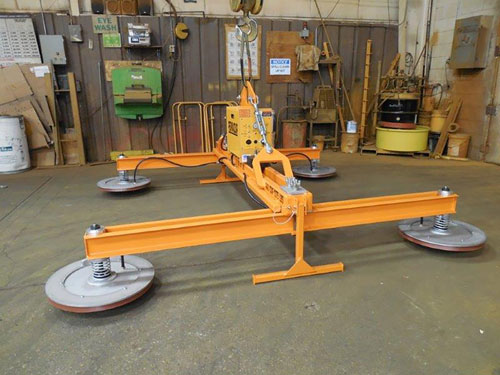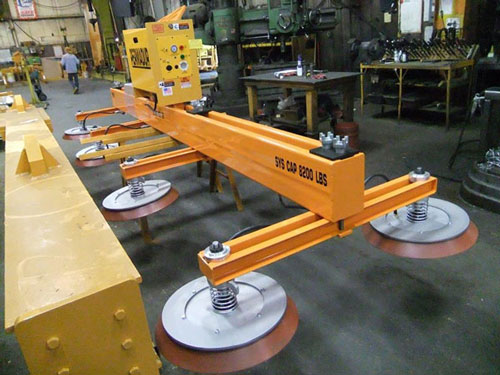 Switching from conventional lifting methods to air-powered (or vacuum-based) solutions presents a transformative approach to workplace lifting. Not only does this technology amplify efficiency, but it also mitigates various immediate and long-lasting health concerns. The beauty of vacuum-assisted lifting devices lies in their capacity to facilitate the movement of hefty items effortlessly and in ways that prioritize the user's health.
Switching from conventional lifting methods to air-powered (or vacuum-based) solutions presents a transformative approach to workplace lifting. Not only does this technology amplify efficiency, but it also mitigates various immediate and long-lasting health concerns. The beauty of vacuum-assisted lifting devices lies in their capacity to facilitate the movement of hefty items effortlessly and in ways that prioritize the user's health.
Redefining Lifting Practices
One of the most frequent culprits of occupational injuries stems from lifting heavy items. Incorrect lifting techniques can lead to painful strains or even severe injuries. Although adopting correct lifting practices is pivotal, it doesn't always guarantee safety, especially with cumbersome items. That's where vacuum-based lifters step in, offering a revolutionary and safer way to handle heavy materials, lessening the load on workers and diminishing injury risks.
Cornerstones of Vacuum Lifting Safety
While vacuum-assisted lifting stands out as an exemplar in the safety arena, it's imperative to note that no lifting method is devoid of risks. Proper equipment maintenance and an in-depth understanding of its operations are pivotal. Understanding that these lifters are designed with specific materials in mind and aren't universal solutions is crucial. For instance, a lifter intended for a solid metal sheet might falter with a porous bag, even if the bag weighs less.
Essential Safety Protocols for Vacuum Lifting
Safety remains paramount, regardless of the technology used. Here are some general safety pillars for air-powered lifting:
- Operators should only handle devices they're trained on.
- Adhere strictly to the user manual.
- Only use lifters within their designated purpose.
- Ensure a robust vacuum grip before initiating any lift.
- Recognize the lifter's constraints; never surpass its limits.
- Damaged goods may compromise the vacuum grip; avoid lifting them.
- Be vigilant of potential accidents like displaced loads.
- Steer clear of suspended loads and never let them hang unnecessarily.
- Prioritize low-altitude transportation with vacuum lifters.
- Always be prepared for emergencies.
- Unauthorized modifications or repairs are a strict no-go.
- Always keep the system pristine and shielded from moisture.
Routine Checks and Maintenance: The Backbone of Safe Lifting
While specialized technicians should handle any modifications, operators must conduct regular inspections to ensure operational safety. For instance:
- Validate the annual inspection date.
- Examine connecting elements for wear and tear.
- Conduct functional tests on safety valves and operating mechanisms.
- Regularly clean and inspect air filters and components.
- Ensure all safety and operational signage is visible and legible.
Periodic and detailed checks by in-house teams complement the routine inspections by operators. If any issues arise, halt operations immediately and consult professionals or the equipment manufacturer.
Vacuum-based lifting sets a gold standard in material handling, given the equipment is in top-notch condition and the user possesses adequate training. This innovation promises efficient, ergonomic, and virtually effortless lifting solutions for modern workplaces.


